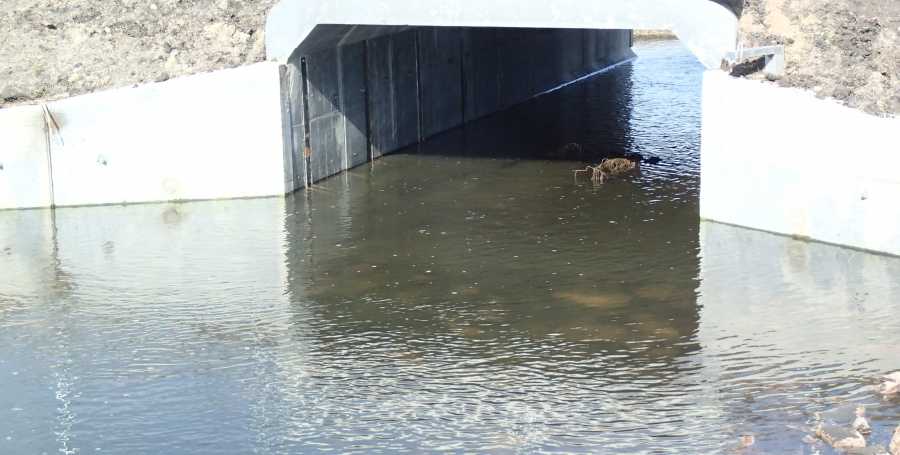Little Sioux River Watershed Site 1C
Culvert barrier designed to prevent the upstream passage of invasive carp.- Location: Brewster, Minnesota
- Commissioned: 2014
- Type: Waterway
Project description
Smith-Root commissioned the installation of an electric fish barrier in Jackson County, Minnesota. The barrier, locally referred to as “1C,” was installed in the downstream end of a box culvert that passes a drainage ditch under a rural road near Brewster. The purpose of the barrier is to prevent the upstream passage of invasive carp.
The barrier is located near the geographic divide that separates the Little Sioux River watershed from the Des Moines River headwaters. Because of the low topography and the extensive agricultural ditch system in the region, upstream migrating fish have the ability to swim across the divide during flood events. The Little Sioux River watershed currently is home to the invasive carp species bighead carp (Hypophthalmichthys nobilis) and silver carp (H. molitrix); adjacent watersheds such as the Des Moines River headwaters and the Minnesota River do not support invasive carp populations.
Minnesota Department of Natural Resources designed the 12’ x 6’ reinforced concrete box culvert to carry the 100-year flow event. The design of the electric fish barrier, led by project manager Jason Kent, P.E., was performed by a team of civil, structural, water resources, and electrical engineers and included installation of Smith-Root electrical barrier equipment. The electrical barrier was commissioned in the summer of 2014.
The 1C barrier is Smith-Root’s 13th installation in Minnesota.
Services provided
- Electrical Engineering
- Civil Engineering
- Software Development and Engineering
- Mechanical Engineering
- Hydraulic Engineering
- Construction Management
Site characteristics
- Pulsators: 1.5kVA POW
- Pulsator Qty: 3
- Power Output: 4.5kW max.
- Water Depth: 6 feet
- Waterway Width: 12 feet
- Water Velocity: 0-4.65 ft/s
- Conductivity: 821 µs/cm
